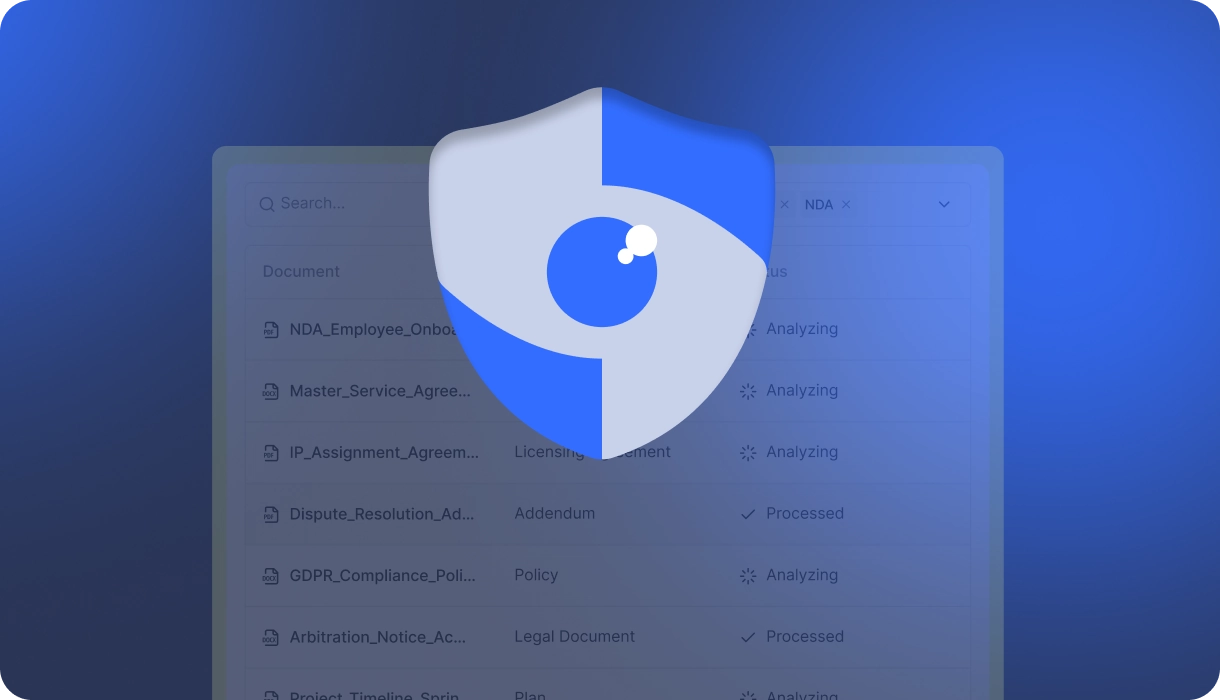The promise of Legal AI is immense: accelerated workflows, reduced manual work, and deeper insights. Yet, for any legal professional, this promise is immediately followed by a critical question: is it safe? Can I trust a third-party AI platform with my most sensitive client information? The answer is a resounding yes—but only if that platform is built on a foundation of enterprise-grade security principles, not consumer-grade technology.
Many of the security concerns surrounding AI stem from popular, consumer-facing chatbots, which often have privacy policies that are unacceptable for legal work. A professional Legal AI platform operates on a completely different set of rules. Let's break down the three core pillars of security you should demand from any AI vendor.
Pillar 1: Zero Data Retention (ZDR) and the Training Wall
This is the most important principle. The primary fear is that your confidential data will be used to train the AI model, potentially exposing it to other users. A trustworthy Legal AI platform must guarantee that this will never happen.
This is achieved through a strict policy known as Zero Data Retention (ZDR). In a ZDR model, your data (the documents you upload, the questions you ask) is used solely to process your immediate request. It is held in temporary, encrypted memory only for the duration of that task and is never permanently stored or written to disk. Once the task is complete, the data is purged.
Crucially, there must be an unbreakable 'wall' between the data used for processing your requests and the data used for training the AI models. At LegalWeave, we are unequivocal: your data is never, under any circumstances, used to train our or any third-party models. It remains your exclusive property.
Pillar 2: End-to-End Encryption
Preventing data from being used for training is only half the battle. The data must also be protected from unauthorized access at every stage. This is where encryption comes in.
Simply having an encrypted database isn't enough. You need end-to-end encryption, which means your data is protected at three key points:
- In Transit: When you upload a document or send a query from your computer to our servers, the data is protected by strong TLS 1.2+ encryption.
- At Rest: While your documents are stored in your secure Vault, they are encrypted using the industry-leading AES-256 standard. Even if someone could physically access the servers, the data would be unreadable.
- In Use: During processing, your data remains within a secure, isolated environment, protected from other users and processes.
This comprehensive approach ensures that your data is shielded from interception or exposure at every point in its lifecycle.
Pillar 3: User Control and Compliance
Finally, a secure platform must put you in the driver's seat. True security involves giving you the controls to manage your own data and the certifications to prove that the platform adheres to global standards.
This includes several key features:
- Granular Permissions: The ability to control exactly who on your team can see or access specific documents, folders, or projects.
- Full Audit Logs: A complete, unchangeable record of who accessed what data and when, providing a clear trail for compliance and internal governance.
- Independent Certifications: Adherence to internationally recognized security standards like SOC 2 Type II is not just a 'nice to have'; it's independent, third-party proof that a company's security practices are robust and consistently followed.
The question is not whether AI is safe for legal work, but whether the specific AI *provider* is. By demanding these three pillars—a strict no-training policy, end-to-end encryption, and robust user controls—you can confidently leverage the power of AI without ever compromising your duty of confidentiality.
